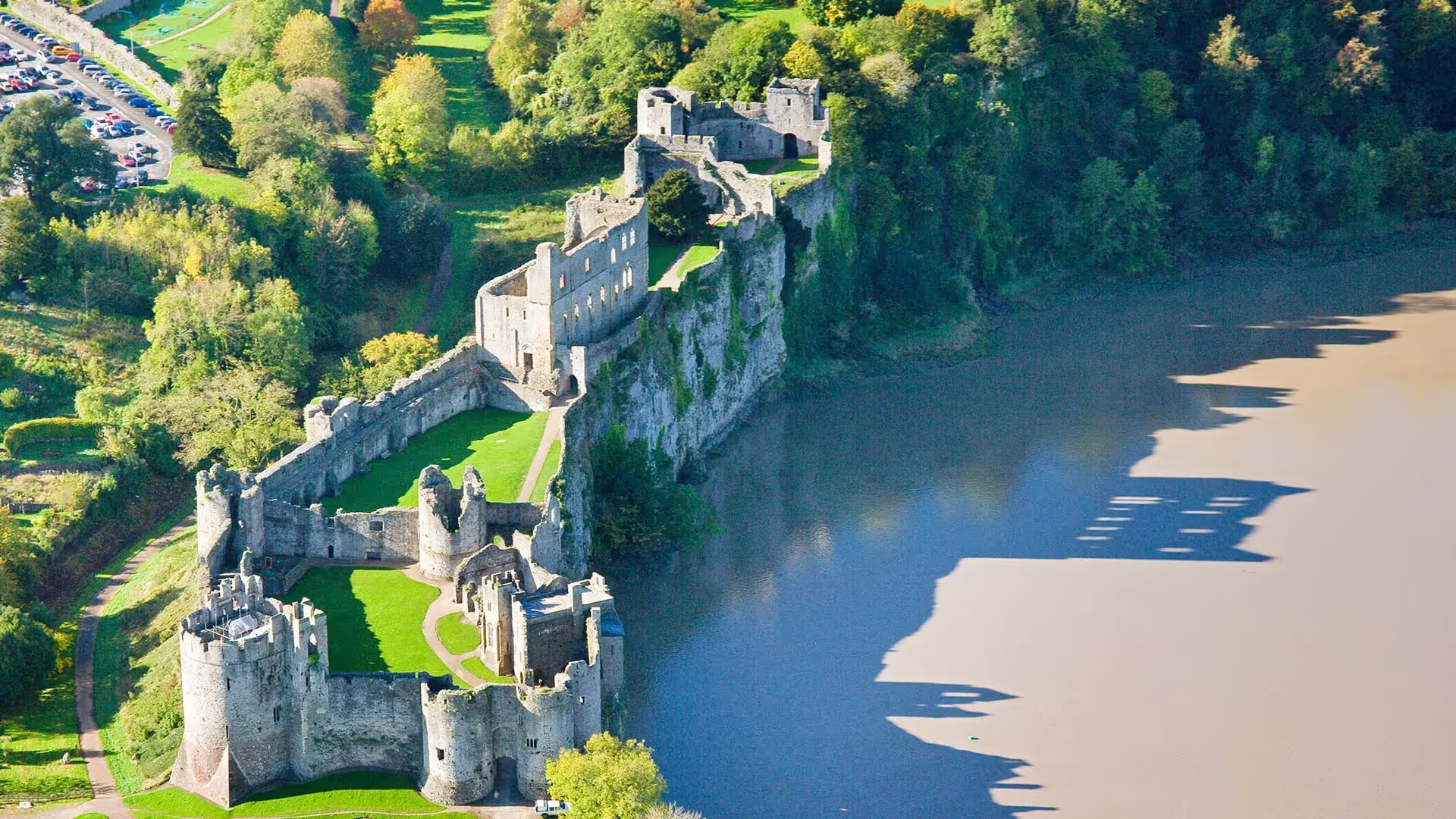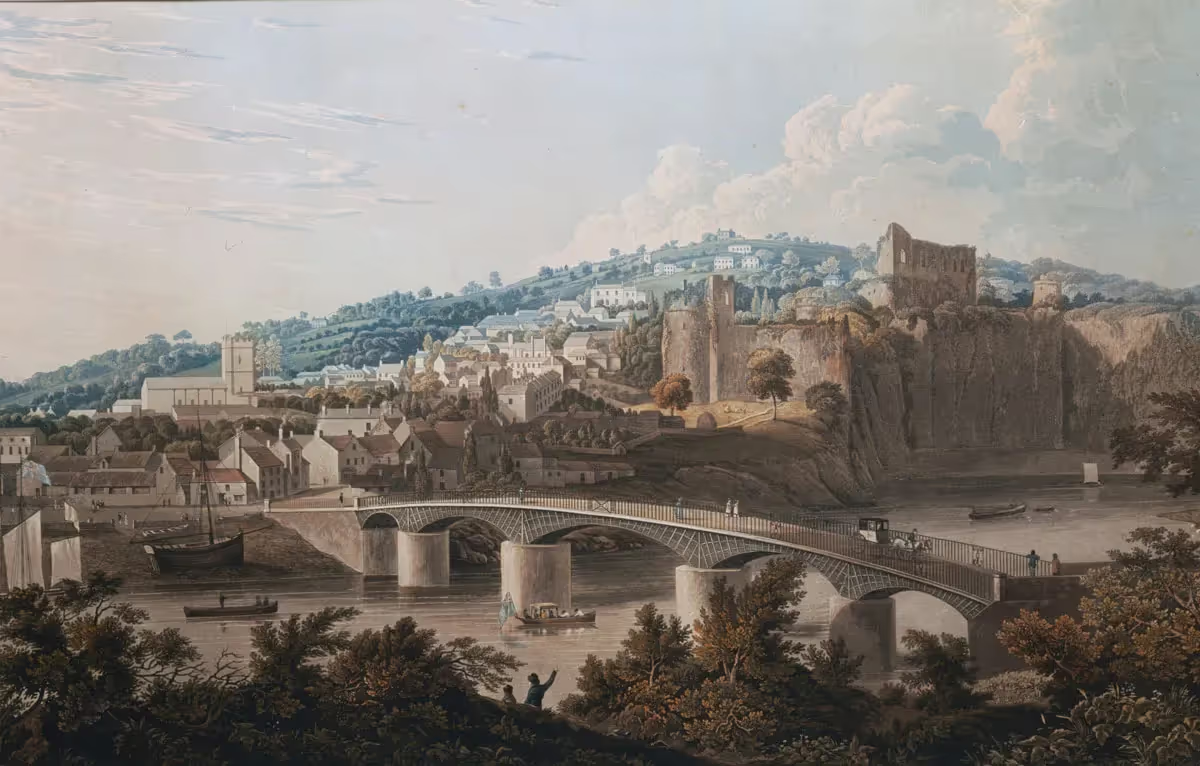


Filter Map
From Tintern the route climbs up through woods, passing old limekilns and across fields to Black Cliff, continuing along a wooded ridge to the Wyndcliff Woods. The highlight of this section is the panoramic vista from the Eagle's Nest viewpoint, some 700ft (213m) above the Severn Estuary. This marks the highest point on the picturesque Piercefield estate. The descent is down 365 steps (one for each day of the year), crossing the A466 to the Lower Wyndcliff.
The route continues through Piercefield Park, a Grade I listed historic landscape created in the 18th century with a series of historic viewpoints and features including The Lover's Leap, The Giant's Cave, The Grotto and The Alcove, from where you can see your final destination - Chepstow Castle. Out of the woods the route follows urban roads downhill and through Castle Dell to the Tourist Information Centre adjacent to the town's medieval castle. Image: Chepstow Castle: Crown Copyright, Visit Wales.


Delightfully sitting on the banks of the Wye, few ruins have the romance of Tintern Abbey. The Cistercian monks who founded Tintern in 1131 built a masterpiece of British Gothic architecture over the following 200 years. Left to return to nature after King Henry VIII’s dissolution of the monasteries, Tintern’s ivy clad ruins captured the attention of travellers taking the ‘Picturesque Wye Tour’ in the late 18th and early 19th centuries, including Turner, Wordsworth and Coleridge.

When Valentine Morris inherited Piercefield in 1743 he set about landscaping his estate on a truly grand scale. The result was one of the most outstanding examples of 18th century picturesque landscape in Britain, which became the highlight at the end of the 'Wye Tour'. The Giant’s Cave was a favourite with visitors who were advised to carry some gunpowder for Mr Morris’s gardener to fire a cannon as they passed by, creating a great reverberating echo. Many features can be seen today.

Perched on limestone cliffs high above the Wye, Chepstow Castle is the first stone-built Norman castle in Britain. Started in 1067 the castle evolved over the following 600 years to deal with newer lethal and destructive weapons. Even the castle doors were sheathed in iron to stop attacks and flaming arrows. They are the oldest castle doors in Europe constructed in the 1190s, now safely displayed in the Castle’s gatehouse.

Housed in an elegant 18th century house built by a prosperous Chepstow merchant family, Chepstow Museum reveals the rich and varied past of this ancient town. The Museum has a substantial collection of 18th and 19th century ‘Wye Tour’ paintings, prints and tour diaries, illustrating the appeal of Chepstow and the Wye Valley to artists and tourists alike. Chepstow was an important port and the wine trade, shipbuilding and salmon fishing are among the industries featured in atmospheric displays.


It’s a fantastic achievement to walk all 136 miles. Mark the miles by keeping a record of your journey, collecting (digital) passport stamps along the route…
MAKE A PASSPORT